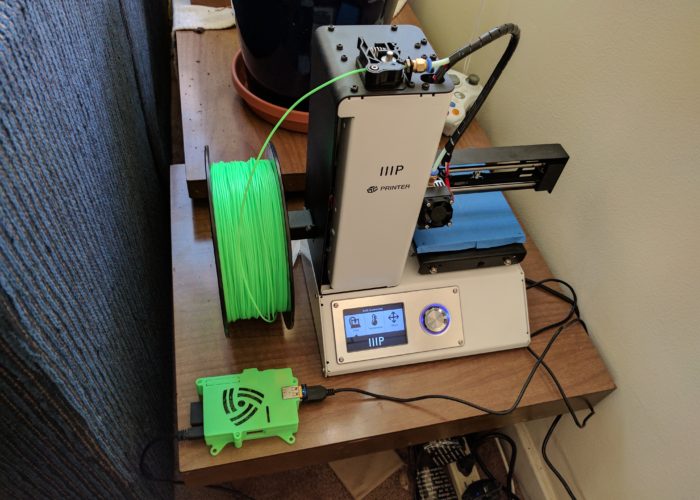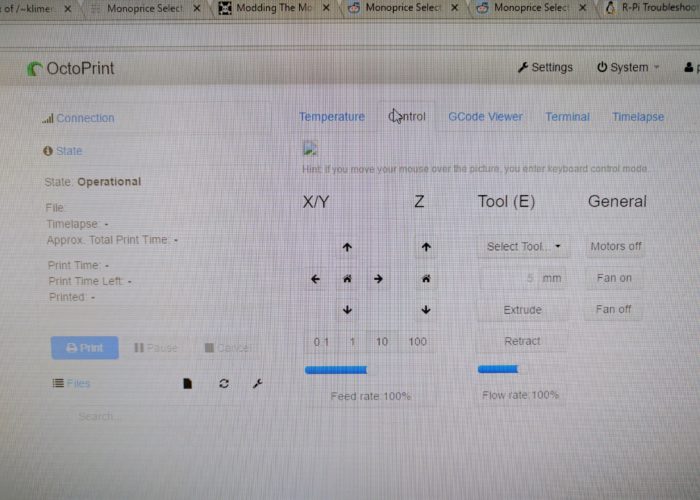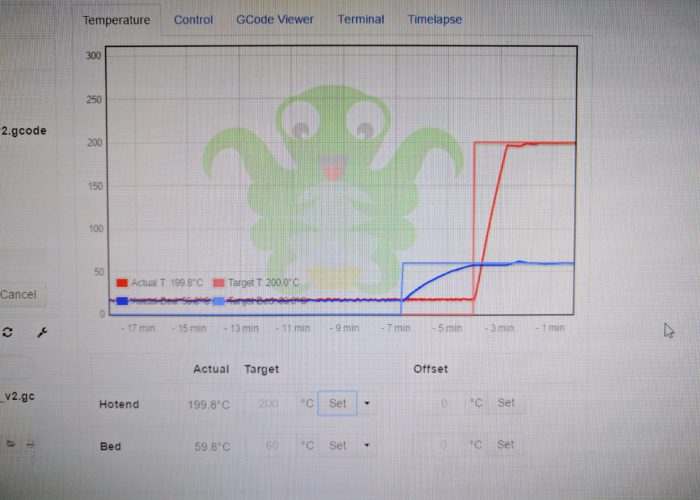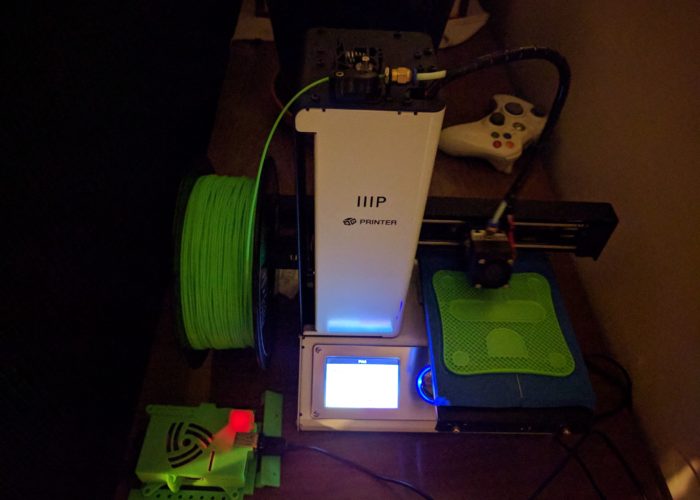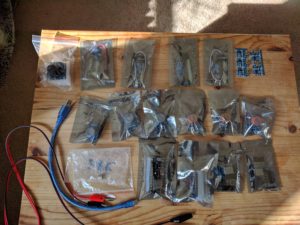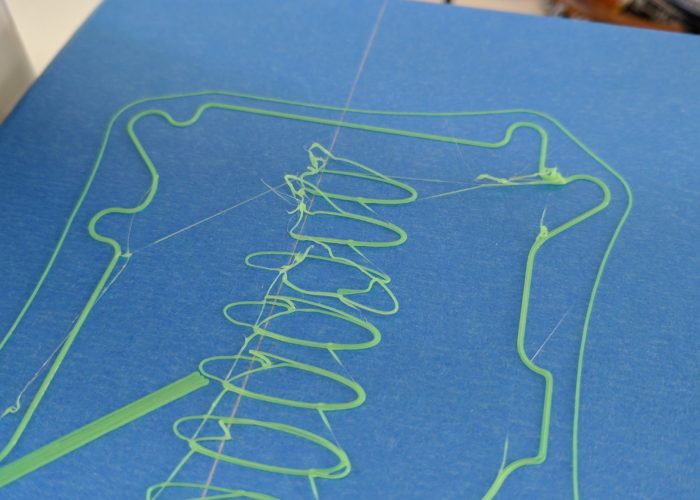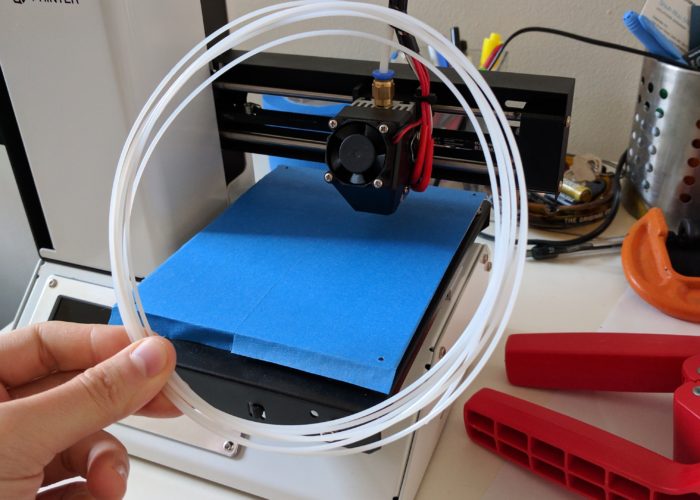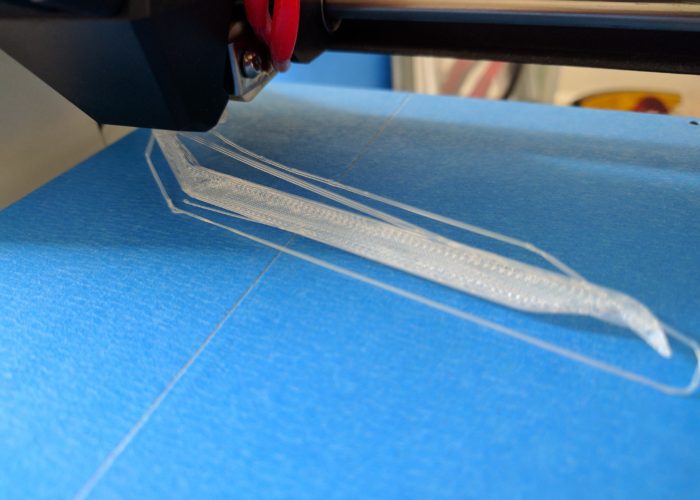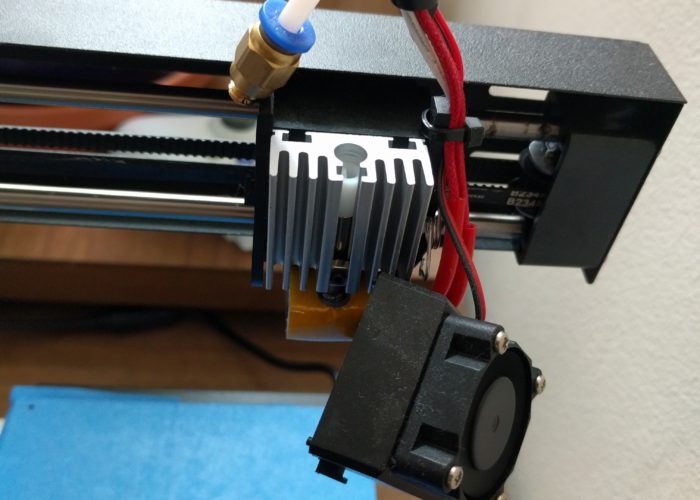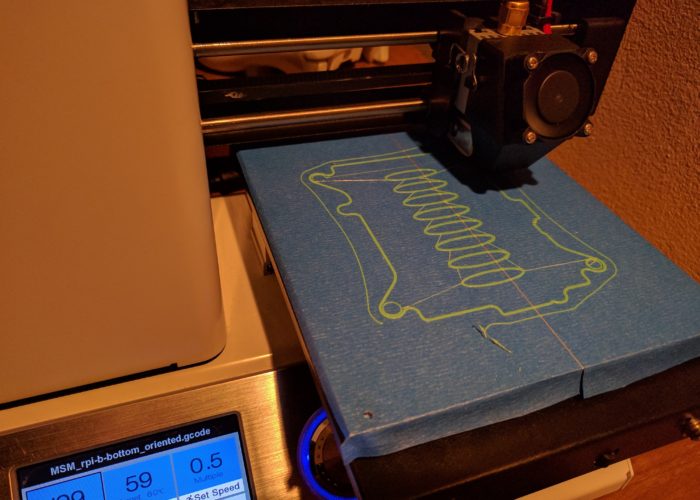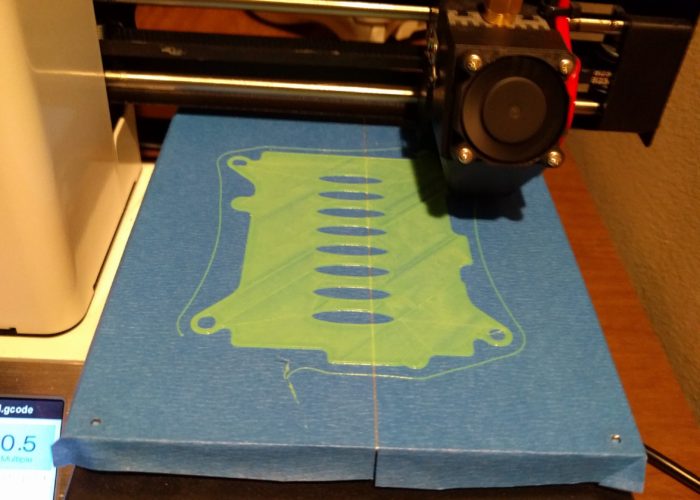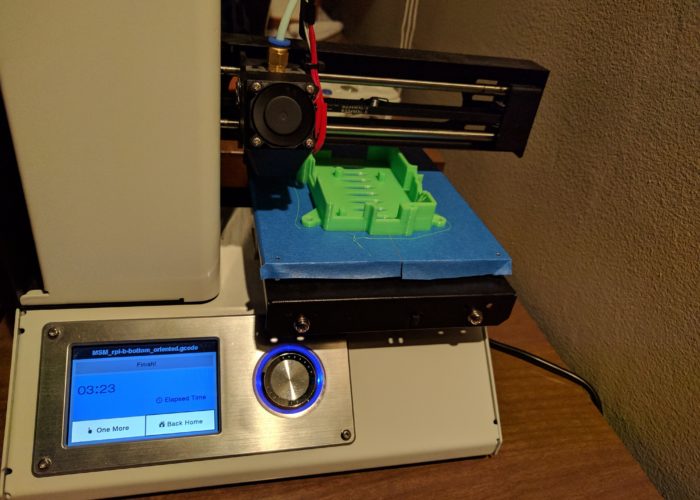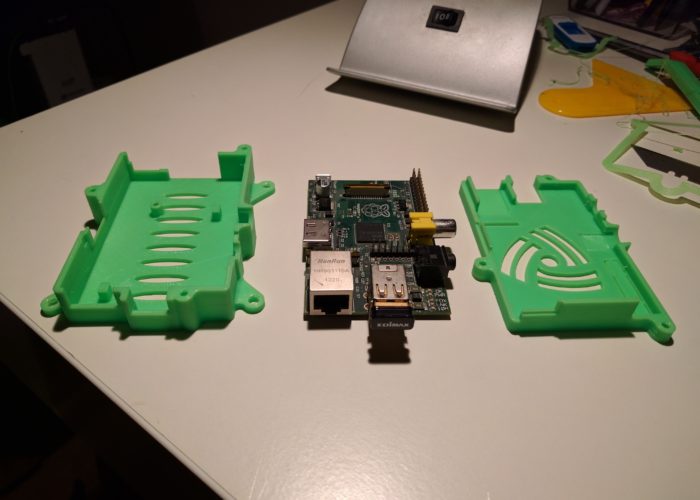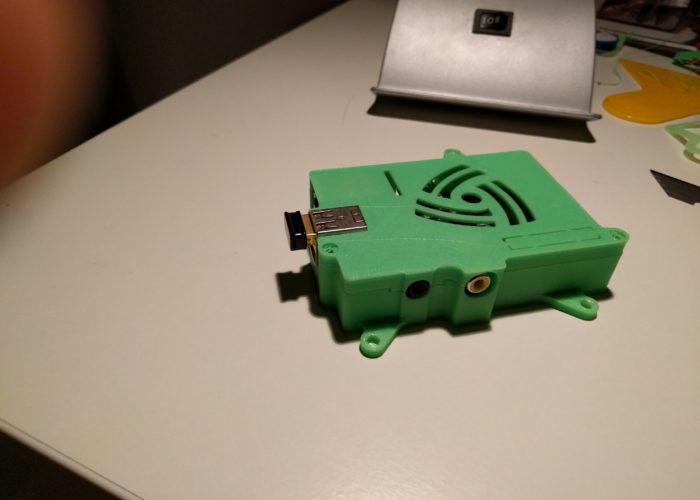One nice thing about having a few extra Raspberry PI’s lying around the house is that every now and then a then you stumble on a really cool use case for them. About a year ago I spent an afternoon installing RetroPi onto one of the Pi’s that I had laying around. With the addition of USB wireless receiver I was able to hook up some old xbox controllers and before I knew it I was playing some old console classics at home.
My recent endeavors into the world of 3D printing presented another opportunity to put a RasPi to use. An open source project called OctoPrint allows people to monitor and control their 3D printers across a network. Since I had an extra RasPi on hand I figured this would be a good use for it. An added bonus is that it would allow me to tuck the printer into a small space near the window (good for venting when in use) because I would no longer need access to the microSD slot to transfer files.
Setting up OctoPrint on the raspi was pretty easy. Just follow the instructions on the website. Once the Pi is setup, I plugged it into the Select Mini and connected to the octoprint server via a browser. It took a few tries to get the Pi to connect to the printer, but within a few minutes I was moving the printer head using the OctoPrint controls. It was pretty awesome.
One word of warning. In the middle of a print I was moving some of the cords around to make sure they didn’t get caught by the printer movements. The PI->USB power cord connection isn’t that great, and when moving them around, it may have resulted in a quick interruption in power. This caused the print to stop. After digging around, it looked like there was no way to get the print going again, so I had to toss the half finished part and start again. In normal printing mode (without the OctoPrint) the select mini is capable of pausing and restarting a print based on the user’s commands. But because the OctoPrint software streams the instructions to printer, neither system is capable of knowing exactly what instructions were executed, so there is no safe way to restart the print. Of course, in normal mode, if you suffer a power interruption, you probably will loose the print as well, so not a huge deal. But basically as a word of caution, make sure you have a good power connection to your RasPi. Other than that one incident however, it has been pretty awesome. I have printed a handful of parts and it is really cool to see the temperature profile of the printer as well as some other stats.
